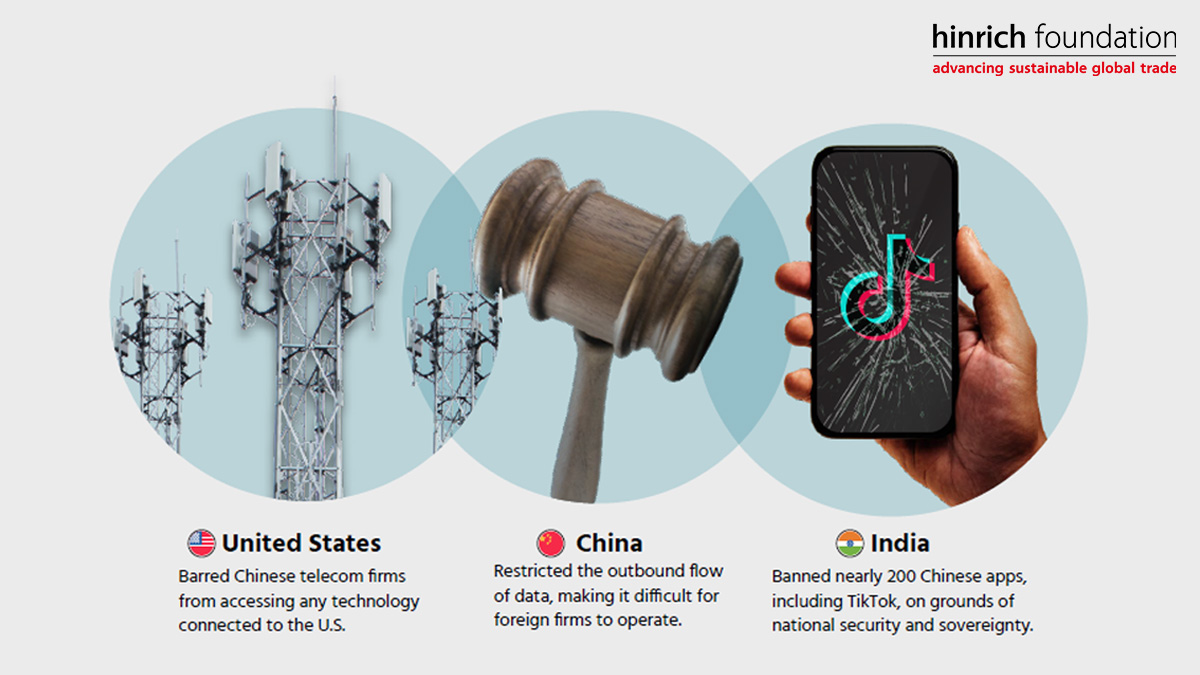Published 23 August 2022
Digitization has been a key driver of productivity growth and improved welfare. However, the future of the digital economy in Asia is not free of challenges. Read our featured publications for a comprehensive understanding of the opportunities and challenges facing digitization in Asia.
The digital transformation in Asia is opening a range of opportunities for businesses, governments, and citizens and accelerating the pace of financial inclusion. Some of the world’s biggest e-commerce growth opportunities have shifted to South and Southeast Asia in the last few years and the latter has added over 70 million online shoppers since the beginning of the pandemic. Four out of the top five countries by retail e-commerce sales growth in 2022 are in Asia. These are- Philippines, India, Indonesia, and Vietnam respectively.
This growth streak of Asia’s digital economy is unlikely to continue if the structural and procedural challenges facing the regulatory and infrastructure landscape in the digital domain are not addressed. Big power rivalry in the technological sphere limits opportunities for collaboration and restricts economic growth.
The US and India banning Chinese-origin telecom firms and Chinese apps on grounds of protecting national security and sovereignty are examples of big power rivalry unfolding in the digital sphere. China has also restricted outbound flow of data, making it difficult for foreign technological platforms to operate in the country.
The growing digital skill gap is another major obstacle to the growth of the digital economy in the region. Inconsistent regulations across Asia further add to the negative impact of the digital landscape.
It has become commonplace for trade agreements in the Asia-Pacific to include a variety of digital trade provisions, as countries realize the importance of policy coherence in the digital domain.
Featured publications:
Emergent digital fragmentation: The perils of unilateralism
No official institution has a global mandate to track policy intervention in the digital sphere. This information gap leads to poor decision-making as policy incoherence at home co-exists with international regulatory divergence. A fragmented internet and global digital economy deny users choice, diminish the incentives for innovation, and exacerbate trade tensions between governments. This 29th report by Global Trade Alert adopts a comprehensive view of the policies affecting the digital domain and their cross-border repercussions. Watch interviews of Deborah Elms and Jake Colvin, Executive Director at the Asian Trade Council and the Global Innovation Forum respectively, where they discuss the key challenges facing the policymakers in the digital domain.
East Asia Forum Quarterly
(Volume 14, No 2: April – June 2022)
Even as governments are prioritizing cloud computing and digital transformation agendas in domestic policymaking, the threat of digital fragmentation has not been actively addressed. As different rules around privacy, cybersecurity, and digital sovereignty emerge to impede interoperability, fragmentation is impacting both governance and infrastructure. Digital borders in China, cross-border data restrictions in Europe, and America’s disavowal of Chinese telecom equipment have led to increasing interruptions in connectivity. The articles in this edition of the EAFQ explore the commonalities in the digital economy, and where we may expect more clashes than cross-cutting frameworks.
© The Hinrich Foundation. See our website Terms and conditions for our copyright and reprint policy. All statements of fact and the views, conclusions and recommendations expressed in this publication are the sole responsibility of the author(s).






